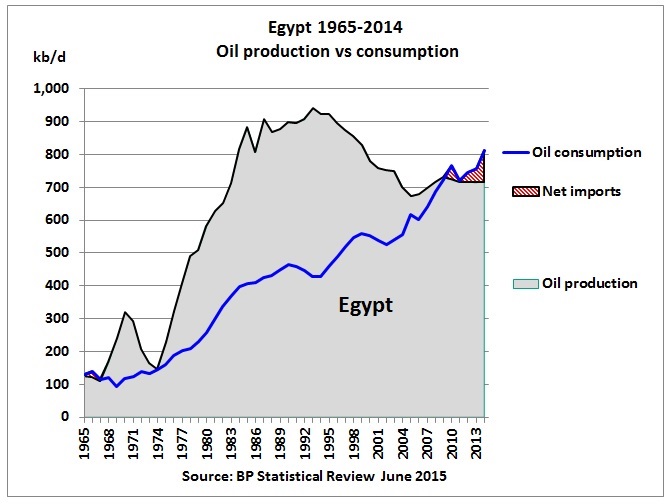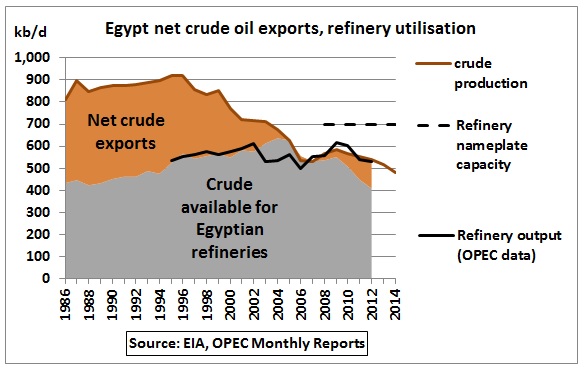Egypt update: net oil importer and chokepoints
Oil production and consumption
Fig 1: Oil production vs consumption
After a post-peak decline production has stabilized but consumption has increased relentlessly at a long-term 1.7% pa, slightly below population growth of around 2% pa. Egypt is now a net oil importer. On these trends, the gap between consumption and production is likely to get larger. This increases imports and the need for fuel subsidies. Let’s zoom into the monthly oil production (crude and NGL separately)
Fig 2: Production of crude oil and natural gas plant liquids
Crude oil production declined again since 2009 at 2.5% pa, offset by an increase in NGLs of 4.7% pa
Fig 3: Net crude exports and refinery utilisation
The crude oil exported up to 2005 (at low oil prices!) is now missing. EIA data are presently only available up to 2012. The EIA writes:
According to data from OPEC’s Annual Statistical Bulletin, Egypt’s refined petroleum output averaged 445,000 b/d in 2013, suggesting that refinery utilization was about 63%. Egypt’s refining output declined by 28% from 2009 to 2013. Facts Global Energy attributes this decline to Egypt’s policy that permits foreign oil producers to export more crude oil as repayment of EGPC’s financial debt. As a result, Egypt’s crude oil exports [56% EU, 28% India, 13% China] have not declined over the past few years, despite declining production. In turn, there is a lower volume of domestic crude oil available for the domestic refineries, and Egypt must make up for the difference by importing petroleum products and/or crude oil. Egypt imported about 145,000 b/d of petroleum products in 2014, according to Global Trade Information Services. Egypt also exported about 60,000 b/d of petroleum products that same year.
…click on the above link to read the rest of the article…


